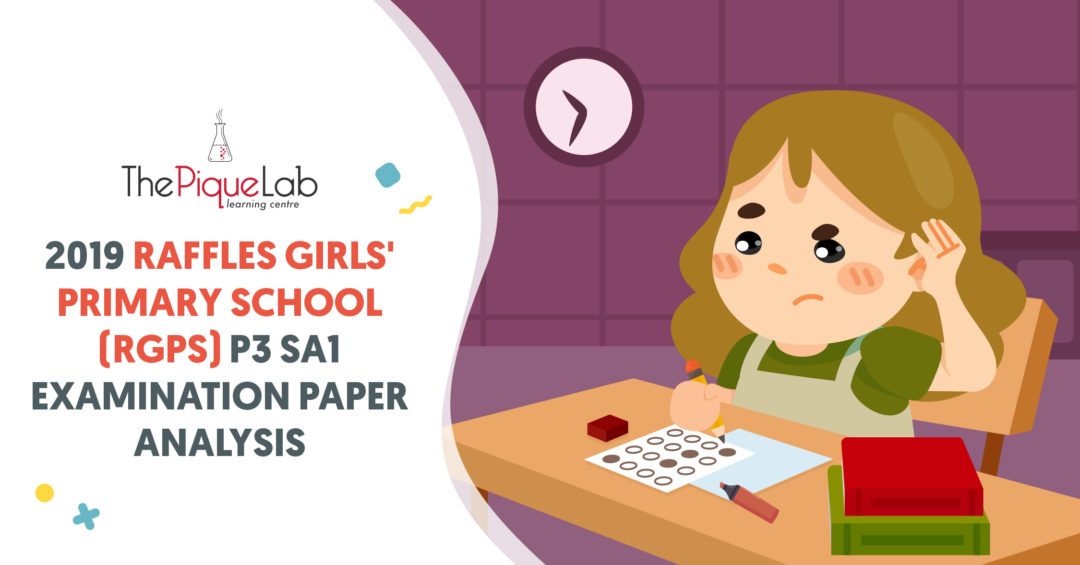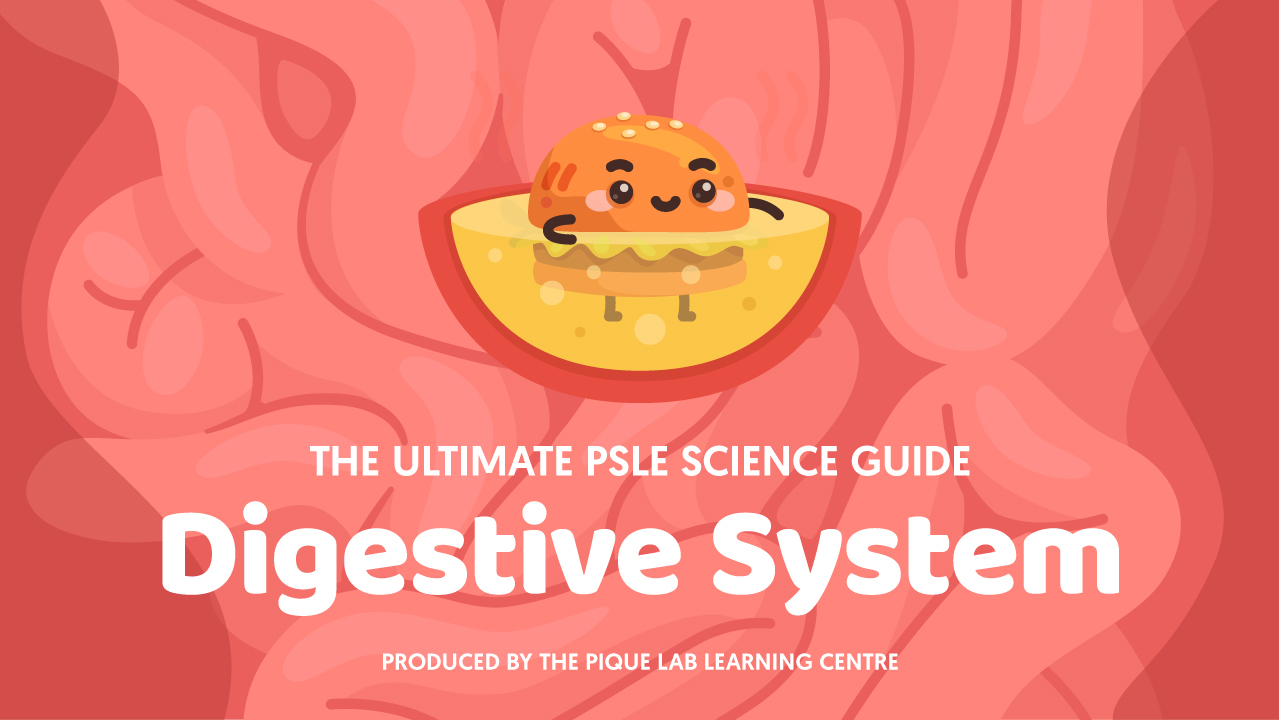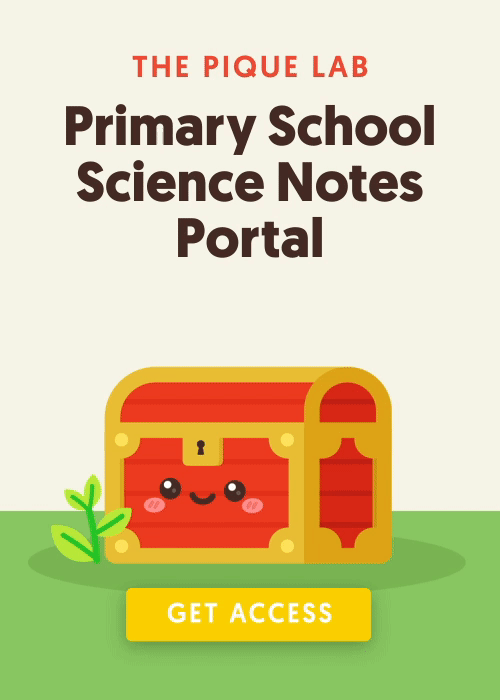Welcome back to our Examination Paper Analysis series!
In this article, we will be reviewing the 2018 Henry Park Primary School (HPPS) P6 Prelim Science Examination Paper.
What Topics Are Covered In This Paper?
As this is a preliminary paper to prepare students for the PSLE, there is a good mixture of topics tested from both the lower and upper blocks.
The two topics with the highest weightage are Heat Energy (6 questions – 4 MCQs & 2 OEQs) and Plants (4 questions – 2 MCQs & 2 OEQs). I have also compiled the topics tested in the table below:

Today, I have selected 2 questions from this paper to discuss in this article. Firstly, we are going to take a look at a question on the topic of Plants about how to use a potometer to measure the rate of transpiration. In the next question, we will be discussing a question from the topic of Web of Life and I will be introducing the concept of a “triangle relationship” to you.
Here’s what we will be learning today:
- How you can observe the movement of water?
- How does placing the plant under different conditions cause the plant to absorb different amounts of water?
- How do we determine the change in an organism’s population by looking at the most immediate impact on the food web?
Let’s Take A Look At Q31b

Source: Henry Park Primary School – 2018 P6 Prelim Examination Paper [Q31b]
Thought Process
This set-up is a potometer. Although you are not required to memorise the name of this set-up, you will need to understand how it works. When plants absorb water through the roots, a “suction” of water is created in the set-up. This is similar to when we use a straw to drink – our mouth is sucking in liquid from one end of the straw much like how the roots of the plants are sucking in water.

How do we observe the movement of water in the potometer if the water looks the same at different positions in the tube? In order to do so, scientists have included an air bubble in this set-up – by observing the movement of the air bubble as water is being absorbed by the roots, we can observe and record the rate at which water is being absorbed.
As I’ve mentioned earlier, the potometer measures the rate of transpiration, which is the rate at which water is lost through the stomata of the leaves as water vapour. If you are wondering how does the amount of water vapour lost relate to the amount of water being absorbed, the concept behind this is that the greater the amount of water lost by the plant, the greater the amount of water absorbed by the roots will be to replenish the water loss.
Suggested Answer
The air bubble will move to the left. As the leafy plant takes in water through its roots, the water in the set-up will move to the left to occupy the space of the water that was absorbed, causing the air bubble to move to the left together with the water.
Bonus Question
“Why does putting the set up in a warm place with sunlight and moving air cause the time taken for the air bubble to move 50 mm to be the shortest?”
Let’s consider how the conditions stated in the question affect the time taken for the air bubble to move 50 mm.
Here’s a summary of the factors affecting the rate of photosynthesis and transpiration to help you out:

Guiding Question 1: What does the presence of light enable the plant to do?
The presence of light enables the plant to carry out photosynthesis. In this process, water in the plant is used up.
Guiding Question 2: How does the presence of light affect the size of the stomata?
As mentioned earlier, the presence of light causes the plant to carry out photosynthesis. Since carbon dioxide is one of the conditions for photosynthesis to take place, the size of the stomata increases to take in more carbon dioxide. However, this process also leads to more water being able to evaporate and escape through the stomata.
Guiding Question 3: How does the presence of warm moving air affect the plant?
I’d like you to focus your attention on the phrase “warm moving air”.
- Warm – temperature of the surroundings
- Moving air – presence of wind
These two conditions belong to the factors of evaporation that will cause water in the plant to evaporate faster.
With your understanding from the 3 guiding questions, let’s answer the bonus question together!
“Why does putting the set up in a warm place with sunlight and moving air cause the time taken for the air bubble to move 50 mm to be the shortest?”
Answer: When the set-up is placed in a warm place with sunlight and moving air, the plant will be able to carry out photosynthesis and the water in the plant is used to make food. In the presence of warm moving air, water in the plant is also lost through the stomata in the form of water vapour in the process of transpiration. Thus, when the plant is in a warm place with sunlight and moving air, it needs to absorb the most water at the fastest rate to replenish its water loss in order to survive as compared to when it is under the other conditions, causing the time taken for the air bubble to move 50mm to be the shortest.
Let’s Take A Look At Q33b

Source: Henry Park Primary School – 2018 P6 Prelim Examination Paper [Q33b]
Thought Process
The diagrams in the question show that the cod fish and the sea otters are in two different food chains. How would different organisms across the 2 different food chains affect each other?
Step 1: We need to draw a link between these two food chains, to see how the cod fish would affect the sea otters.
As the killer whale is the common organism in both food chains linking the cod fish and the sea otters, we can combine the two food chains into a food web.

Step 2: Annotate the food web to show the changes in the population size of the organisms.

Over-fishing of cod fish causes its population to decrease. Since seals are a predator of cod fish, over-fishing of cod fish would cause the seals to have less prey to feed on, leading to a decrease in the population of seals.
From this point onwards, the “triangle relationship” is formed between seals, killer whales and the sea otters. This results in 2 ways for us to interpret the outcome.
- Scenario 1

The cod fish is the prey of seals, leading to the population of seals decreasing when the population of cod fish (1st) decreases due to over-fishing. As seals are the prey of killer whales, the population of seals decreasing (2nd) will lead to the population of killer whales decreasing (3rd), as there is now less prey for killer whales to feed on. Since sea otters are also the prey of killer whales, the decrease in the population of killer whales will cause an increase in the population of sea otters (4th) as there are now fewer predators to feed on sea otters. - Scenario 2

Both seals and sea otters are the prey of killer whales. As the population of seals decreases (2nd), the population of sea otters will also decrease (3rd) because there are now fewer seals for the killer whales to feed on, causing the killer whales to feed on more sea otters.
Should we use Scenario 1 or 2 to answer the question?
We should choose the scenario with the most immediate impact on the organism’s population.
In Scenario 1, the sea otter population increases because there are more sea otters reproducing as there are fewer killer whales feeding on them.
In Scenario 2, the population of sea otters is decreasing due to the killer whales feeding on more sea otters due to the decrease in the seal population.
Comparing the two scenarios, we have to decide if the reproduction of sea otters in Scenario 1 or the death of sea otters in Scenario 2 has a more immediate impact. I will choose Scenario 2 as it is definitely faster to cause death to an organism as compared to the process of reproduction.
Thus, the answer provided in Scenario 2 is more accurate as we are looking at the interpretation with the most immediate impact.
Note: The process of death occurs much faster than the process of reproduction.
Suggested Answer
By combining the thought processes from Step 1 & 2, here is my suggested answer:
The population of the sea otters will decrease.
The seals are the predator of the cod fish. When over-fishing of the cod fish occurs, the population of the cod fish will decrease, causing the population of seals to decrease, as there is now less prey for the seals to feed on.
The killer whales are the predator of both seals and sea otters. When the population of seals decreases, the population of sea otters will also decrease, as there are fewer seals for the killer whales to feed on. Thus, the killer whales will now feed on more sea otters.
In Conclusion
I hope that you have enjoyed reading this article and here are the 2 key points I’d like you to take away:
- The amount of water absorbed by the plant depends on the conditions it is being placed under. Under different conditions, the process of photosynthesis and transpiration can occur at different rates, which will affect the amount of water the plant needs to absorb.
- Organisms die faster than they can reproduce. In order to figure out the change in the population for a certain organism, we need to look at the most immediate impact on that organism’s population.
We have come to the end of the examination paper analysis of the 2018 Henry Park Primary School (HPPS) P6 Prelim Science Examination Paper.
Stay tuned for more exam paper analysis coming your way! 😊

If you like our methodology, we've some upcoming workshops:







